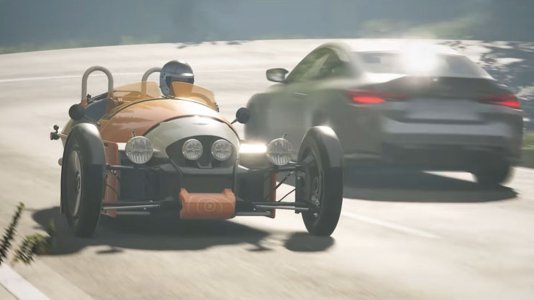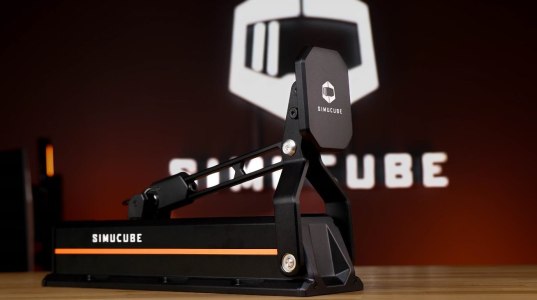This is the trio of "Squadra Biscione" liveries, as worn on the bizarre FNM Quetzalcóatl, a Brazilian sports prototype built on the Berta Tornado SP body and powered by a hybrid Alfa Romeo-FNM twin-cam six. Fading into obscurity by the mid-70s, the car was a legendary Latin American melting pot, that proved its worth on the International circuit with a short bright career that only spanned two short years.
To find more liveries for the Argentine cousin on which this prototype is based, I highly recommend checking out @Spudknuckles livery pack for the Berta Tornado SP.

When the Fábrica Nacional de Motores (FNM) decided to step up their motorsports program in early 1969, the decision was made to purchase three ex-Autodelta Alfa Romeo Tipo 33/2s to rebuild and campaign within Brazil and Southern America for the 1970 race season. However, when the cargo ship from Italy had an onboard fire, these three chassis were written off due to flame and smoke damage.

The team had already been picked, and was mostly comprised of staff selected from Londrina tuning house 'Garage Biscione', which specialized in Alfa Romeos and other imported Italian makes. In the wake of the Tipo 33 disaster, FNM was desperate to find a suitable domestic frame to run in place of the Italian thoroughbreds. The motors prepared were a highly modified version of Alfa's older twin-cam six. Fed by triple 45 DCOE Webers, and using specialized Autodelta internals lifted from the GTA and Tipo programs, the motor was a unique hybrid to say the least.
Using his network of connections, lead driver and Biscione mechanic Jaime Santiago, got in touch with a contact in Buenos Aires, who was able to secure three Berta Tornado SP shells following the fold of a commission by an Argentine privateer.

After a month of rail journeys and truck transport across Paraná, the three Tornado shells were delivered to downtown Londrina, and work commenced to install a myriad of Italo-Brazilian Autodelta and FNM hardware to create a true Latin Frankenstein's monster, the FNM "Quetzalcóatl". Christened by the Mexico City native Santiago, the name paid homage to the Biscione, the fearsome serpent shown on the Alfa Romeo crest. The Quetzalcóatl was the divine feathered serpent of Aztec mythology, and despite being a tongue twister, the name was affectionately given to the three prototypes, which were then bathed in a livery of blue and yellow, proudly baring the Alfa-derived FNM crest, as well as the primary sponsors of Bardahl and soft drink Guaraná Antarctica.

Debuting at Interlagos in the heat of mid-Summer 1970, the three cars lined up alongside more thoroughbred streamline competition. Leading the trio was Santiago, followed by the Nipo-Brasileiros prodigy Mayumi Yamura-Trevisan. Having proven herself a young champion in the FNM backed Giulia Supers, Yamura was the only Brazilian driver on the team, as seat three was contracted to British racing driver Lee Niven, who had recent successes running Lolas far North in the US Group 7 series.

Having this outwardly appearing international trio, as well as a female driver behind the domestic FNM brand, the ragtag team and crew raised polarized eyebrows. Not all attention was positive, drawing some skepticism and prejudice from organizers as well as the FNM management. What disdain there was diminished however, once the blue and yellow oddities began to rack up podiums and wins as the racing calendar burned through August and September. By the end of the championship, Squadra Biscione had earned a title and international attention.

Following more successes in '71, the team went on exhibition, touring the Quetzalcóatl to promote Brazilian motorsports at Greater American circuits including Buenos Aires, Interlagos, Riverside, Sebring, Bridgehampton, and Mont-Tremblant. This was seen as a grand finale for the team, as by the end of '71 it was announced that FNM would cut their motorsports budget, ending their funding and affiliation with Squadra Biscione and their proven but obsolete Quetzas.

With Santiago returning to running his business running the garage in Londrina, the other two drivers continued their racing careers with considerable success. Yamura was spring-boarded into prototype racing across the Pacific in Japan, while Niven participated in SCCA and IMSA competitions in North America. The pair would much later reunite in the 1980s. running both the 24 Hours of Daytona and Le Mans.

The Quetzalcóatl faded into obscurity as a bizarre oddity. The Mexican named, Argentine bodied, Italian powered, Brazilian built prototypes disappeared from the racing scene all together, rumored to be surviving but scattered in private collections around the globe. Perhaps one day one of the three will see the light of day again, but until then we can only wonder.

To find more liveries for the Argentine cousin on which this prototype is based, I highly recommend checking out @Spudknuckles livery pack for the Berta Tornado SP.
When the Fábrica Nacional de Motores (FNM) decided to step up their motorsports program in early 1969, the decision was made to purchase three ex-Autodelta Alfa Romeo Tipo 33/2s to rebuild and campaign within Brazil and Southern America for the 1970 race season. However, when the cargo ship from Italy had an onboard fire, these three chassis were written off due to flame and smoke damage.
The team had already been picked, and was mostly comprised of staff selected from Londrina tuning house 'Garage Biscione', which specialized in Alfa Romeos and other imported Italian makes. In the wake of the Tipo 33 disaster, FNM was desperate to find a suitable domestic frame to run in place of the Italian thoroughbreds. The motors prepared were a highly modified version of Alfa's older twin-cam six. Fed by triple 45 DCOE Webers, and using specialized Autodelta internals lifted from the GTA and Tipo programs, the motor was a unique hybrid to say the least.
Using his network of connections, lead driver and Biscione mechanic Jaime Santiago, got in touch with a contact in Buenos Aires, who was able to secure three Berta Tornado SP shells following the fold of a commission by an Argentine privateer.
After a month of rail journeys and truck transport across Paraná, the three Tornado shells were delivered to downtown Londrina, and work commenced to install a myriad of Italo-Brazilian Autodelta and FNM hardware to create a true Latin Frankenstein's monster, the FNM "Quetzalcóatl". Christened by the Mexico City native Santiago, the name paid homage to the Biscione, the fearsome serpent shown on the Alfa Romeo crest. The Quetzalcóatl was the divine feathered serpent of Aztec mythology, and despite being a tongue twister, the name was affectionately given to the three prototypes, which were then bathed in a livery of blue and yellow, proudly baring the Alfa-derived FNM crest, as well as the primary sponsors of Bardahl and soft drink Guaraná Antarctica.
Debuting at Interlagos in the heat of mid-Summer 1970, the three cars lined up alongside more thoroughbred streamline competition. Leading the trio was Santiago, followed by the Nipo-Brasileiros prodigy Mayumi Yamura-Trevisan. Having proven herself a young champion in the FNM backed Giulia Supers, Yamura was the only Brazilian driver on the team, as seat three was contracted to British racing driver Lee Niven, who had recent successes running Lolas far North in the US Group 7 series.
Having this outwardly appearing international trio, as well as a female driver behind the domestic FNM brand, the ragtag team and crew raised polarized eyebrows. Not all attention was positive, drawing some skepticism and prejudice from organizers as well as the FNM management. What disdain there was diminished however, once the blue and yellow oddities began to rack up podiums and wins as the racing calendar burned through August and September. By the end of the championship, Squadra Biscione had earned a title and international attention.
Following more successes in '71, the team went on exhibition, touring the Quetzalcóatl to promote Brazilian motorsports at Greater American circuits including Buenos Aires, Interlagos, Riverside, Sebring, Bridgehampton, and Mont-Tremblant. This was seen as a grand finale for the team, as by the end of '71 it was announced that FNM would cut their motorsports budget, ending their funding and affiliation with Squadra Biscione and their proven but obsolete Quetzas.
With Santiago returning to running his business running the garage in Londrina, the other two drivers continued their racing careers with considerable success. Yamura was spring-boarded into prototype racing across the Pacific in Japan, while Niven participated in SCCA and IMSA competitions in North America. The pair would much later reunite in the 1980s. running both the 24 Hours of Daytona and Le Mans.
The Quetzalcóatl faded into obscurity as a bizarre oddity. The Mexican named, Argentine bodied, Italian powered, Brazilian built prototypes disappeared from the racing scene all together, rumored to be surviving but scattered in private collections around the globe. Perhaps one day one of the three will see the light of day again, but until then we can only wonder.










